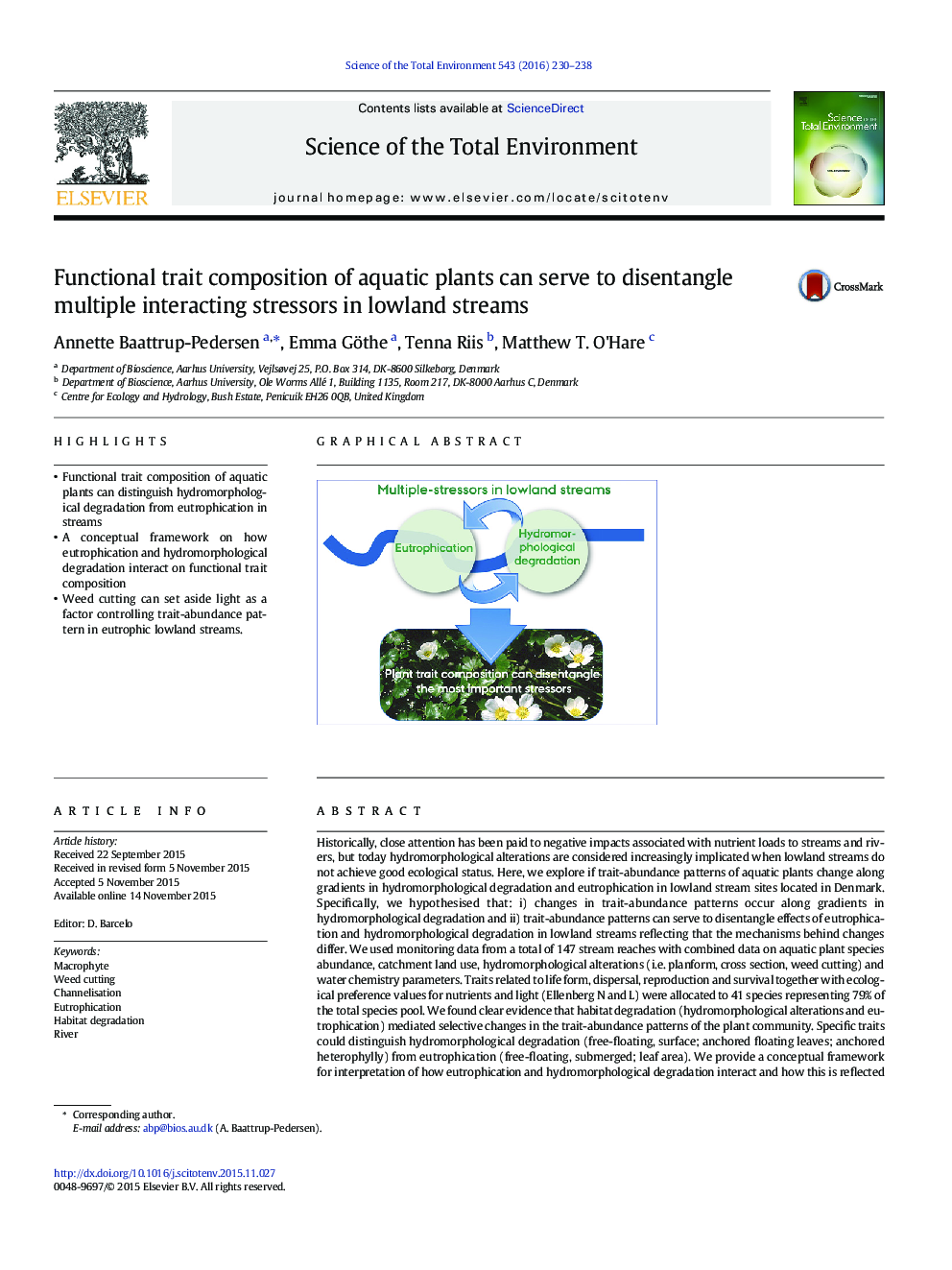| کد مقاله | کد نشریه | سال انتشار | مقاله انگلیسی | نسخه تمام متن |
|---|---|---|---|---|
| 6324344 | 1619740 | 2016 | 9 صفحه PDF | دانلود رایگان |
- Functional trait composition of aquatic plants can distinguish hydromorphological degradation from eutrophication in streams
- A conceptual framework on how eutrophication and hydromorphological degradation interact on functional trait composition
- Weed cutting can set aside light as a factor controlling trait-abundance pattern in eutrophic lowland streams.
Historically, close attention has been paid to negative impacts associated with nutrient loads to streams and rivers, but today hydromorphological alterations are considered increasingly implicated when lowland streams do not achieve good ecological status. Here, we explore if trait-abundance patterns of aquatic plants change along gradients in hydromorphological degradation and eutrophication in lowland stream sites located in Denmark. Specifically, we hypothesised that: i) changes in trait-abundance patterns occur along gradients in hydromorphological degradation and ii) trait-abundance patterns can serve to disentangle effects of eutrophication and hydromorphological degradation in lowland streams reflecting that the mechanisms behind changes differ. We used monitoring data from a total of 147 stream reaches with combined data on aquatic plant species abundance, catchment land use, hydromorphological alterations (i.e. planform, cross section, weed cutting) and water chemistry parameters. Traits related to life form, dispersal, reproduction and survival together with ecological preference values for nutrients and light (Ellenberg N and L) were allocated to 41 species representing 79% of the total species pool. We found clear evidence that habitat degradation (hydromorphological alterations and eutrophication) mediated selective changes in the trait-abundance patterns of the plant community. Specific traits could distinguish hydromorphological degradation (free-floating, surface; anchored floating leaves; anchored heterophylly) from eutrophication (free-floating, submerged; leaf area). We provide a conceptual framework for interpretation of how eutrophication and hydromorphological degradation interact and how this is reflected in trait-abundance patterns in aquatic plant communities in lowland streams. Our findings support the merit of trait-based approaches in biomonitoring as they shed light on mechanisms controlling structural changes under environmental stress. The ability to disentangle several stressors is particularly important in lowland stream environments where several stressors act in concert since the impact of the most important stressor can be targeted first, which is essential to improve the ecological status.
233
Journal: Science of The Total Environment - Volume 543, Part A, 1 February 2016, Pages 230-238
